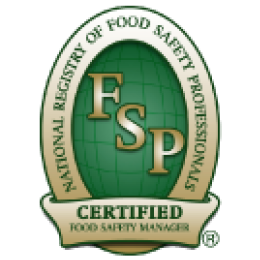Foodborne illnesses, often termed "food poisoning," are insidious health hazards lurking within our meals. These illnesses result from consuming contaminated food or beverages containing harmful germs or chemicals. While many cases manifest with temporary discomfort, some can escalate to severe health complications or even fatalities. The prevalence of foodborne illnesses is a significant public health concern, with staggering statistics highlighting the widespread impact on individuals across the United States. In this blog, we delve into the intricacies of foodborne illnesses and explore effective preventive measures to safeguard against these invisible threats.
Foodborne Illnesses and Outbreaks
Contaminated Food & Drinks: The journey of contamination begins at various stages, from production to consumption. Factors such as infected animals, contaminated water sources, and poor hygiene practices during food handling contribute to the proliferation of germs. Foods most prone to contamination include raw meat, poultry, seafood, unpasteurized dairy products, and fresh produce. Inadequate cooking or pasteurization exacerbates the risk by allowing pathogens to survive and thrive within these consumables.
Prevention Strategies: Mitigating the risk of foodborne illnesses necessitates adherence to stringent food safety practices. The fundamental principles of cleanliness, segregation, thorough cooking, and refrigeration form the cornerstone of preventive measures. By adopting these guidelines diligently, individuals can minimize the likelihood of ingesting harmful pathogens and protect themselves and their loved ones from potential health repercussions.
Foodborne Outbreaks: Foodborne outbreaks, characterized by multiple individuals falling ill after consuming the same contaminated food, pose formidable challenges to public health authorities. Contrary to popular perception, these outbreaks transcend geographical boundaries, often originating from contaminated food sources distributed across diverse regions. Vigilant surveillance, prompt reporting, and collaborative efforts among health departments are imperative for mitigating the spread of such outbreaks and averting widespread illnesses.
CDPH's Role: The California Department of Public Health (CDPH) plays a pivotal role in combating foodborne illnesses and outbreaks. Through coordinated efforts with local and federal agencies, CDPH conducts rigorous investigations to trace the origins of outbreaks, identify common sources of contamination, and implement necessary interventions. By fostering transparency and proactive communication, CDPH endeavors to safeguard public health and mitigate the impact of foodborne hazards on communities.
Conclusion:
Foodborne illnesses represent a formidable challenge to public health, with far-reaching implications for individuals and communities. However, through informed awareness and proactive measures, the risk of falling victim to these invisible adversaries can be significantly mitigated. By embracing rigorous food safety practices, fostering collaboration with public health authorities, and advocating for stringent regulatory measures, we can collectively fortify our defenses against foodborne illnesses and pave the way for a safer and healthier future.
In the battle against foodborne illnesses, vigilance and preparedness are our most potent weapons. Let us embark on this journey of safeguarding our plates and ensuring the well-being of generations to come.





